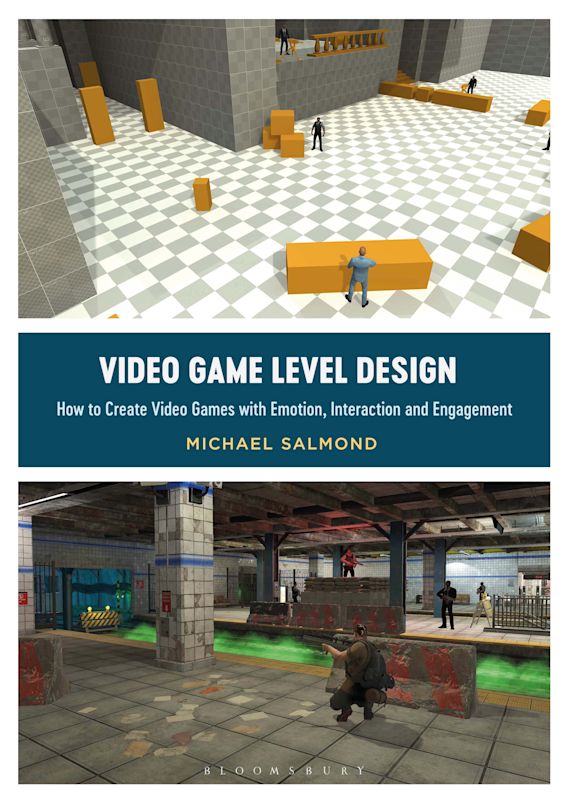Level design is an important aspect of video game development that involves creating the layout, environment, challenge, and experience of a level. To create successful levels, designers must consider several principles. The first principle, flow, involves guiding players through a level with a sense of direction and purpose. The second principle, challenge, involves providing players with challenges that match their skills and provide a sense of accomplishment. The third principle, environment, involves designing an immersive environment that supports the game’s narrative, aesthetics, and mechanics. The fourth principle, narrative, involves integrating the level’s story into the environment, challenges, and interactions. The fifth principle, player feedback, involves providing clear and concise feedback on player actions and progress. By applying these principles, designers can craft great levels that enhance the overall gaming experience.
Crafting Great Levels: Principles of Designing Levels for Video Games
Level design is an essential aspect of video game development. It is the process of creating the layout, environment, challenge, and experience of a level. A well-designed video game level can make a game more enjoyable and immersive. It is critical to consider several principles when creating levels for video games. This article will discuss the principles of designing levels for video games.
1. Flow
The first principle of level design is flow. Flow refers to the progression of gameplay through a level. A well-flowing level will provide a sense of direction, purpose, and progress. It will guide players through an experience that feels natural and engaging. An excellent flow will keep players immersed in the game without confusion or frustration.
To achieve flow in a level, the designer must consider various factors such as the player’s movement, navigation, and interaction with the environment. A good start is to create a clear path for the player to follow with the help of visual cues like lighting, color, and texture.
The level should also have a linear or non-linear structure that fits the game’s narrative, mechanics, and objectives. It is essential to balance the difficulty to prevent players from feeling overwhelmed or bored. Other factors to consider include pacing, variety, and accessibility.
2. Challenge
The second principle of level design is challenge. A well-designed level should provide the player with challenges that match their skills and provide a sense of accomplishment when complete. The challenges should be rewarding without being unfair or punishing. This principle will greatly affect the player’s interest and motivation to continue playing the game.
The level’s challenges can be expressed through various game mechanics such as puzzles, combat, exploration, and platforming. The designer should consider the skills and abilities of the player’s character and the tools at their disposal. The challenges should be designed in a way that forces the player to apply their skills and adapt to different situations.
The difficulty of the challenges should also be progressive throughout the level, increasing in complexity and intensity as the player progresses. Levels without challenges make the game boring, and challenges without rewards will make the game frustrating. Thus, a balance between difficulty and reward is the key to creating successful levels.
3. Environment
The third principle of level design is the environment. A well-designed environment can greatly contribute to the player’s immersion and enjoyment of the game. The level’s environment should be designed to support the game’s narrative, aesthetics, and mechanics. The environment can include elements such as terrain, buildings, vegetation, and weather.
The level’s environment should be designed to create a sense of place, whether it’s a fantasy world, a post-apocalyptic wasteland, or a futuristic city. The environment can contain visual and audio elements to support the player’s experience. The designer should consider the level’s lighting, color, texture, and sound to create an immersive environment that matches the game’s style and tone.
The environment should also be interactive, providing players with tools or opportunities to interact with their surroundings. Interactive elements can include physics, destructible objects, or puzzles. However, it is crucial to ensure that the interactivity is relevant and does not distract or break immersion.
4. Narrative
The fourth principle of level design is narrative. A well-designed level should support the game’s story and provide context for the player’s actions. The level’s narrative should be integrated into the environment, challenges, and interactions of the level. The narrative in levels can be expressed through various means such as dialogue, cutscenes, or environmental storytelling.
The designer should consider the level’s role in the game’s overall story and its impact on the player’s emotional journey. The level’s narrative should provide players with a sense of purpose and motivate them to progress through the game. To enhance immersion and engagement, the narrative should be expressed in a way that fits the game’s style and tone.
5. Player Feedback
The fifth principle of level design is player feedback. A well-designed level should provide players with feedback on their actions and progress. Feedback can be used to reinforce player’s behavior or provide hints on how to solve challenges.
The designer should consider the level of feedback necessary for the game and the player’s needs. The feedback can be visual, auditory or haptic. Visual feedback can include indications of damage, scoring, or in-game messages. Auditory feedback can include music, sound effects, or voice-over. Haptic feedback can include vibrations, force-feedback or gamepad rumble.
The player’s feedback should be clear and concise, not distracting or confusing. The designer’s goal is to provide feedback that encourages players to continue playing the game and accomplish the level’s goals.
Conclusion
The five principles discussed in this article provide a guide for designing levels for video games. Flow, challenge, environment, narrative, and player feedback are critical to creating enjoyable and memorable levels. Each principle should be considered when designing levels, ensuring a balanced and engaging player experience. By applying these principles, designers can craft great levels that add value to the overall gaming experience.
